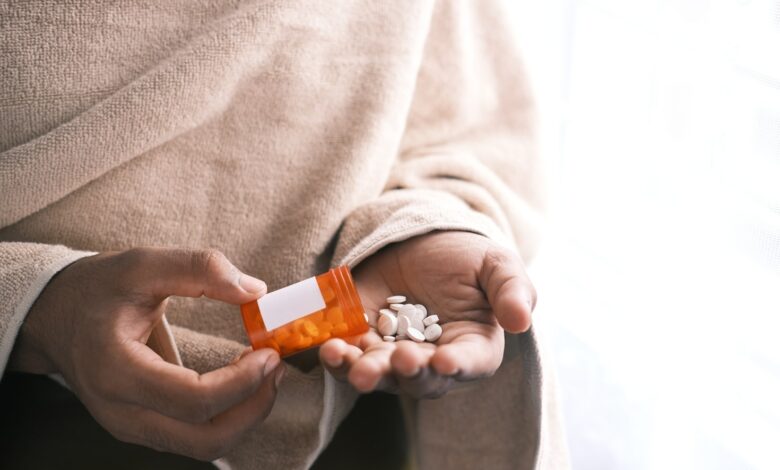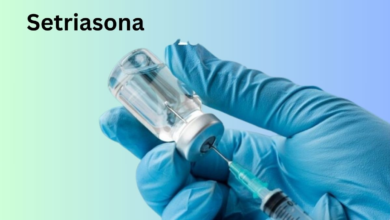Overcoming Health Hurdles After Opioid Dependence

The grip of opioid dependence extends far beyond the initial throes of addiction. The severity of the epidemic is apparent from the fact that more than 1,500 people die every week from opioid overdoses.
The path to recovery is a challenging journey, demanding strength and perseverance in the face of unique health obstacles. This blog post explores four of the most significant health hurdles individuals encounter as they embark on this transformative journey.
Conquering Physical Dependence
The initial few weeks of recovery are often dominated by a formidable foe: physical dependence. Discontinuing opioid use can trigger a cascade of physical challenges. The body reacts to the absence of opioids with a range of symptoms, including muscle aches and cramps that can be quite severe. Digestive issues like nausea and vomiting are also common.
Sleep disturbances are another hallmark feature, with individuals struggling to fall asleep, stay asleep, and often experiencing fatigue throughout the day.
The intensity of these withdrawal symptoms varies depending on the person’s opioid use history and the type of opioid they were taking.
However, its impact is undeniable, posing a significant challenge in the early stages of recovery.
Medication-Assisted Therapy
Medication-assisted treatment (MAT) has become an essential tool in the fight against opioid dependence. It integrates the use of medications with personalized behavioral treatment to meet the individual needs of each patient.
Suboxone, a medicine composed of buprenorphine and naloxone, is commonly used in MAT programs. These two primary components work in tandem to modulate brain chemistry, mitigating withdrawal symptoms and diminishing cravings. What this does, in addition to alleviating physical discomfort, is that it enhances patients’ capacity to engage in therapy.
Suboxone Controversy
Initially, Suboxone was marketed as a safe pharmacological intervention. However, TorHoerman Law reports that a significant number of Suboxone users have experienced severe dental issues. These complications manifest as significant damage to the teeth, including extensive decay and loss, sometimes necessitating root canal procedures.
In response to these adverse effects, affected individuals are pursuing legal action against the pharmaceutical companies responsible for Suboxone’s manufacture and promotion. The crux of the Suboxone tooth decay lawsuit is that the companies deliberately hid the potential risks associated with the medication.
Consider the predicament of a patient who is grappling with the intense cravings and physiological changes accompanying opioid cessation. They must now also contend with significant dental complications. This scenario underscores the multifaceted challenges faced by individuals in recovery.
It’s crucial to recognize that physiological dependence on opioids does not dissipate instantaneously. Intense cravings, a hallmark of addiction, often persist during the early stages of recovery, compounding the difficulties faced by patients.
Underlying Mental Health Conditions
Substance abuse frequently coexists with preexisting mental health conditions. Depression, anxiety, and PTSD may occur before or along with opioid use. These conditions can contribute to an individual’s initial use of opioids as a coping mechanism.
During recovery, when the opioids are no longer present, these underlying mental health issues can resurface, increasing the risk of cravings or relapse.
The body’s response to quitting opioids throws the brain’s reward system into disarray. This can trigger intense anxiety and agitation, leaving individuals feeling jittery, restless, and easily frustrated.
Sleep patterns are also disrupted, making it hard to fall asleep and stay asleep and sometimes even cause hallucinations. This lack of quality sleep further worsens existing mental health struggles.
Another serious concern is anhedonia, which is the inability to perceive pleasure. According to the Cleveland Clinic, it can significantly diminish an individual’s motivation and pleasure in activities that were once highly satisfying and fulfilling.
Neonatal Abstinence Syndrome
When a pregnant woman is dependent on opioids, their baby may experience a group of withdrawal symptoms after birth. This condition, known as neonatal abstinence syndrome (NAS), arises because the newborn was exposed to opioids in the womb.
Newborns exposed to opioids in the womb may experience a range of symptoms affecting their nervous system, digestion, and body functions.
These can include shakiness, irritability, fussiness, and difficulty sleeping. Feeding problems, frequent sucking, throwing up, diarrhea, and constipation are also possible. Other signs may include sweating, fever, yawning, sneezing, and rapid breathing. In rare cases, the baby may struggle to gain weight, become dehydrated, or even have seizures.
The intensity of NAS is strongly linked to the mother’s opioid use patterns and may require specialized medical attention for the newborn. Infants with NAS commonly exhibit withdrawal symptoms within the initial 24-72 hours following delivery.
Furthermore, these symptoms may reach their highest intensity between days 3 and 5 and progressively decrease throughout one to two weeks.
Infectious Endocarditis and the Need For Holistic Care
Intravenous drug use with non-sterile needles poses a serious risk for opioid users—infectious endocarditis. It is a dangerous condition where the inner lining of the heart becomes inflamed. This inflammation is caused by bacteria or fungi that enter the bloodstream and travel to the heart.
Surgery is the main course of treatment for endocarditis. However, a significant challenge arises when many patients relapse into opioid use shortly after the procedure. This leads to a high mortality rate within a few years.
Experts emphasize the crucial role of holistic care in addressing both the addiction and the infection. Just treating endocarditis will not be a long-term success. Addiction specialists play a vital role in this process. They can help individuals overcome their dependence and reduce the risk of relapse, which is critical for their overall well-being.
The road to recovery from opioid dependence is arduous, but it is a journey filled with hope.
FAQs
Q: How does physical dependence manifest in early recovery?
A: Individuals may experience withdrawal symptoms like muscle aches, nausea, fatigue, and trouble sleeping. The severity varies depending on the use history and opioid type.
Q: What are the concerns surrounding Suboxone, a medication used in MAT?
A: Some Suboxone users have reported severe dental problems. Lawsuits claim drug companies downplayed these risks.
Q: How can underlying mental health conditions impact opioid recovery?
A: Depression, anxiety, and PTSD can worsen during recovery, increasing cravings and relapse risk. Withdrawal itself disrupts sleep and pleasure, further straining mental health.
To conclude, the battle against opioid dependence extends far beyond the realm of physical dependence. It is a complex web encompassing mental health, potential complications in newborns, and even the risk of serious infections.
While the journey to recovery is undoubtedly challenging, a deep understanding of these health hurdles empowers individuals to confront them with greater resilience.





